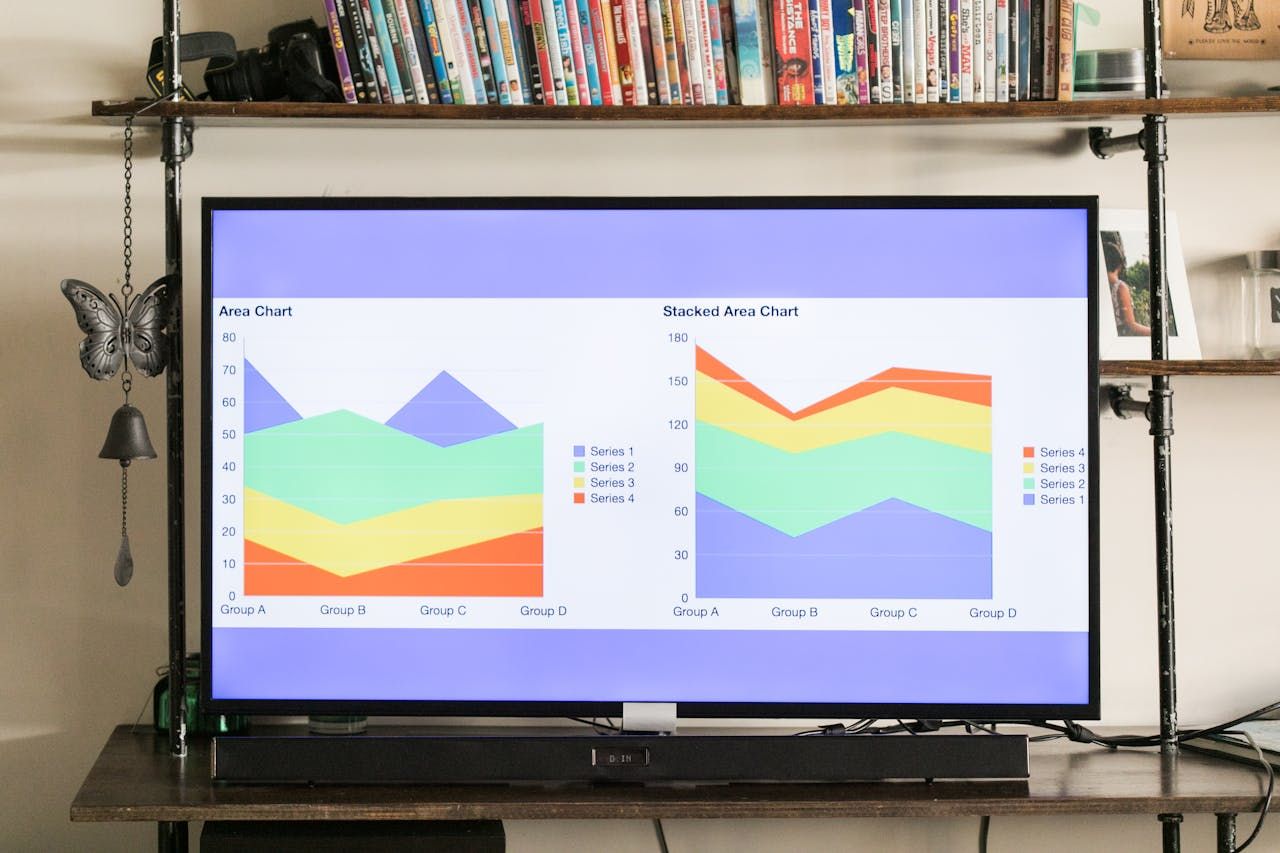In the fast-paced world of public relations, mastering the art of media lists can significantly elevate a PR professional's impact. With the right contacts at their fingertips, professionals can transform their outreach efforts and enhance media relations. Understanding the intricacies of media lists is essential for navigating this dynamic field successfully.
A media list is more than just a collection of journalist names and contact details; it's a tailored resource designed to connect with the right people at the right time. Each media list serves as a strategic tool that helps PR professionals tailor their pitches and ensure their messages resonate with specific audiences. By identifying key components such as relevant journalist information and careful segmentation, professionals can create lists that maximize their chances of securing valuable media coverage.
Media List offers fully customizable media contacts list starting at $9.99 for the media contacts in one media outlet, and just $0.25 per additional media outlet. The lists include company name, address, contact name, job title, email, and LinkedIn profiles. Whether you're looking for insights on traditional, digital, or influencer media lists, this guide aims to equip you with the tools you need to excel in your PR efforts.
Define what a media list is
A media list is a compiled database of key media contacts used in public relations. It includes contact details like names, email addresses, and phone numbers of relevant journalists and editors. A media list can be organized in Google Sheets or other tools for easy access and management.
Components of a Media List:
- Journalists' Names: Ensure you know who you are addressing.
- Email Addresses: Essential for sending email pitches.
- Contact Details: Includes phone numbers and social media profiles for personalized communication.
- Types of Content: Understand what content each journalist covers.
Media lists often include relevant contacts from news sites, social media platforms, and editorial teams. Creating a media list from scratch requires research to find journalist contacts and personal contacts who are relevant to the industry.
Having a media list helps build strong relationships with individual journalists. It allows you to target your media efforts effectively toward your target audience. By maintaining updated and accurate contact lists, businesses can easily reach potential customers and industry experts.
A well-organized media list is crucial in fostering relationships with journalists and ensuring your messages reach the right audience.
Understand the importance of a tailored media list
A tailored media list is essential for any PR strategy. By focusing on relevant journalists and industry experts, you ensure your message reaches the right audience. Here are some key reasons why a customized media list is important:

- Target Audience Alignment: Connect with journalists who write for your target audience. This increases the chance your story gets published.
- Efficiency: Having a list of contacts saves time. You won't waste effort reaching out to irrelevant contacts.
- Strong Relationships: Building relationships with journalists is easier when your media list contains personal contacts and key media contacts.
- Personalized Pitches: Sending a personalized pitch to individual journalists increases the likelihood of your content being noticed.
- Updated Information: A curated contact list ensures you have up-to-date contact details, such as email addresses and social media profiles.
Sample Media List Structure:
| Journalist Name | Publication | Email Address | Specialization |
|---|---|---|---|
| Jane Doe | News Daily | jane@example.com | Health & Wellness |
| John Smith | Tech Times | john@example.com | Technology & Innovation |
Creating your list from scratch may require using Google Sheets or a contact database. This ensures accuracy and helps maintain strong relationships with the editorial team on various social platforms.
Identify key components of a media list
A media list is a critical element of your PR strategy. It ensures your message reaches the right audience and gets noticed by key media contacts. A well-crafted list comprises several essential components, each serving a specific purpose in your outreach efforts. Here's a closer look at these key components:
Relevant journalist contact information
Your media list should include contact details of relevant journalists, such as their email addresses and social media profiles. This information helps you connect with individual journalists who are likely to be interested in your story. Having direct access to journalist contacts increases the chances of your content being published.

Segmentation by media type
Segment your media list by media type to target the right platforms. Different journalists write for various types of content like news sites, blogs, or social media platforms. This segmentation allows you to tailor your email pitches according to the specific needs and focus areas of each journalist.
Organization and formatting
Organize your media list for easy navigation and update it regularly to keep information current. You can use tools like Google Sheets or a contacts database for this purpose. An organized list ensures you can quickly find the contact information you need, making the process of sending personalized pitches more efficient. Here’s a simple format you can use:
| Journalist Name | Publication | Email Address | Specialization |
|---|---|---|---|
| Jane Doe | News Daily | jane@example.com | Health & Wellness |
| John Smith | Tech Times | john@example.com | Technology & Innovation |
By structuring your media list effectively, you can enhance your PR efforts and build strong relationships with relevant journalists.
Explore different types of media lists
Creating a media list is essential for any PR strategy. It helps you connect with the right audience and ensure your message reaches relevant contacts. Media lists categorize different types of contacts for better targeting. Knowing the difference between them can guide you in choosing the right approach for your communication needs.
Traditional media lists
Traditional media lists focus on mainstream outlets. These include newspapers, magazines, and TV stations. The goal is to reach key media contacts in these areas. It involves gathering journalist contacts, editorial team members, and reporters who cover your industry. Keep their contact details, like Email addresses and phone numbers, organized in Google Sheets or other tools. Having a solid list of contacts helps when sending out email pitches or phone calls. Establishing strong relationships with journalists in this media type is crucial for getting coverage.
Digital media lists
Digital media lists target online platforms and news sites. They include relevant journalists who write for blogs, online magazines, and digital publications. These lists often involve using contacts databases to manage a list of journalists who cater to digital readers. Google News and various social platforms can be excellent sources to discover individual journalists. Personalize your email pitches to these contacts to increase your chances of engagement. It's also vital to follow and interact with them on social media platforms to build relationships.
Influencer media lists
Influencer media lists focus on social media profiles and content creators. These influencers have followers who could be potential customers for your brand. This list involves identifying influencers who align with your brand and have a significant audience. Use a list of contacts including their email address and social profiles to reach out. A personalized pitch can make your approach more effective. Building relationships with these industry experts can drive your message further. Create this list from scratch, focusing on influencers across different types of content relevant to your goals.

In conclusion, each type of media list has distinct advantages. The choice depends on the target audience and the type of content you need to promote. Managing these lists carefully can lead to better media coverage and stronger connections within the industry.
Learn best practices for maintaining media lists
Creating and maintaining media lists is crucial for successful public relations. The goal is to establish strong relationships with relevant journalists and key media contacts. A well-organized list helps you target the right audience and pitch your stories effectively. Here are some best practices to keep your media lists in top shape.
Regularly updating contact information
Your media list is only as good as the accuracy of its contact details. To maintain a reliable list, regularly update each journalist's email address, phone number, and social media profiles. Use tools like Google Sheets to keep it organized. Set reminders to verify this information every few months. An outdated list can lead to missed opportunities and wasted resources. Building a habit of updating ensures your emails reach the right people.
Categorizing based on beats and interests
A media list should categorize contacts based on their beats and interests. This helps tailor your email pitches to their specific needs. For example, list health journalists under "Health" and those focused on technology under "Tech." This approach increases the chances of capturing their attention. Use tables to sort individual journalists into categories. Having clear segments can improve relationships with journalists by offering them personalized pitches that match their expertise.
Analyze the pros and cons of buying vs. building media lists
When deciding between buying or building media lists, it's important to weigh the pros and cons.

Buying Media Lists
Pros
- Saves time: Get a list quickly.
- Wide reach: Access to many potential contacts.
Cons
- Quality concerns: Lists may contain outdated contact details.
- Impersonal: Hard to send a personalized pitch using generic lists.
Building Media Lists
Pros
- Quality control: Ensure contacts are relevant journalists for your target audience.
- Strong relationships: Builds connections with key media contacts over time.
Cons
- Time-consuming: Gathering a list of contacts takes effort.
- Resource-intensive: Requires using tools like Google Sheets for a contact database.
In summary, buying saves time but may risk quality. Building ensures relevant contacts and strong relationships with journalists but needs more effort. Choose what fits your needs best.
Gather expert insights on optimizing outreach

To optimize outreach, it's crucial to understand the preferences of your target audience. Engage with industry exp